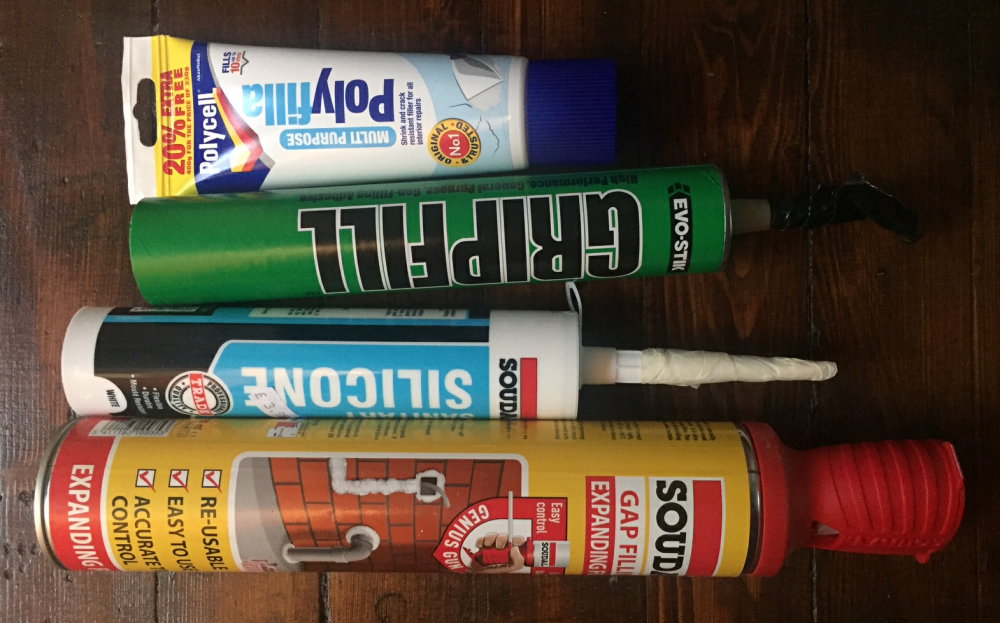Expanding foam
Contents |
[edit] Introduction
Sealants are typically used to close openings between spaces that are too small for other materials such as concrete, timber or mortar to be used. They have a wide range of properties in terms of strength, flexibility, appearance permanence, solubility, corrosion resistance and so on.
Expanding foam filler is a common type of polyurethane filler. It can be sprayed into gaps such as those around windows and doors to stop draughts, fill gaps and dampen sound. It is designed to adhere to a variety of common building materials and can be water resistant.
[edit] Expanding foam characteristics
Foams can be divided into two different ways: type and purpose.
- Type of application: handheld dispenser or gun grade applicator.
- Purpose of application: Filling voids or securing materials through adhesion (these foams have a lower expansion rate).
Expanding foam filler is made up of materials that expand under different conditions, depending on its composition. One type of expanding polyurethane foam requires moisture in order to expand, which can make it sticky during the installation process. Another begins to expand when two different chemicals are mixed together. Dampening the surface that will be treated can help the foam set more quickly.
There are several differences between types of foam which should be clearly marked on the containers:
- Indoor or outdoor use.
- Sandable or paintable.
- Presence of HCFCs or CFCs (no longer permitted).
- Gun grade or handheld.
[edit] Possible dangers of expanding foam
It’s important to proceed with caution with the application process, since the chemicals can be toxic if they are not used properly. However, the substance should be safe once it has fully expanded and dried.
Basic foams can be flammable and may create toxic smoke if they are exposed to fire. There are some foams that can resist fire for a certain time when directly exposed to flames.
Cured foam should be protected from daylight or other light since this can degrade the effectiveness of the product over time. Dried foam can be painted, or otherwise covered, to protect it from light.
Expanding foam should be used relatively quickly once a can or gun is started, since the chemicals may not retain their effectiveness over time. It can also be difficult to remove or clean foam. There is a special type of chemical that can be used to clean wet foam, and in some instances, acetone can be used.
[edit] Related articles on Designing Buildings Wiki
Featured articles and news
RTPI leader to become new CIOB Chief Executive Officer
Dr Victoria Hills MRTPI, FICE to take over after Caroline Gumble’s departure.
Social and affordable housing, a long term plan for delivery
The “Delivering a Decade of Renewal for Social and Affordable Housing” strategy sets out future path.
A change to adoptive architecture
Effects of global weather warming on architectural detailing, material choice and human interaction.
The proposed publicly owned and backed subsidiary of Homes England, to facilitate new homes.
How big is the problem and what can we do to mitigate the effects?
Overheating guidance and tools for building designers
A number of cool guides to help with the heat.
The UK's Modern Industrial Strategy: A 10 year plan
Previous consultation criticism, current key elements and general support with some persisting reservations.
Building Safety Regulator reforms
New roles, new staff and a new fast track service pave the way for a single construction regulator.
Architectural Technologist CPDs and Communications
CIAT CPD… and how you can do it!
Cooling centres and cool spaces
Managing extreme heat in cities by directing the public to places for heat stress relief and water sources.
Winter gardens: A brief history and warm variations
Extending the season with glass in different forms and terms.
Restoring Great Yarmouth's Winter Gardens
Transforming one of the least sustainable constructions imaginable.
Construction Skills Mission Board launch sector drive
Newly formed government and industry collaboration set strategy for recruiting an additional 100,000 construction workers a year.
New Architects Code comes into effect in September 2025
ARB Architects Code of Conduct and Practice available with ongoing consultation regarding guidance.
Welsh Skills Body (Medr) launches ambitious plan
The new skills body brings together funding and regulation of tertiary education and research for the devolved nation.
Paul Gandy FCIOB announced as next CIOB President
Former Tilbury Douglas CEO takes helm.
UK Infrastructure: A 10 Year Strategy. In brief with reactions
With the National Infrastructure and Service Transformation Authority (NISTA).























